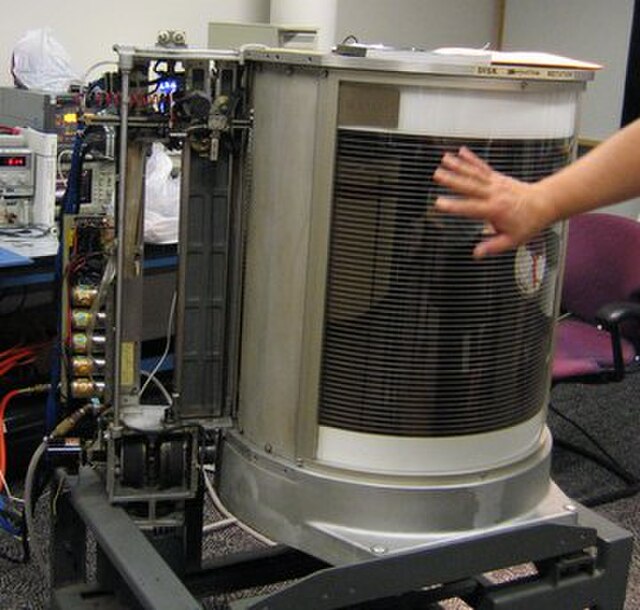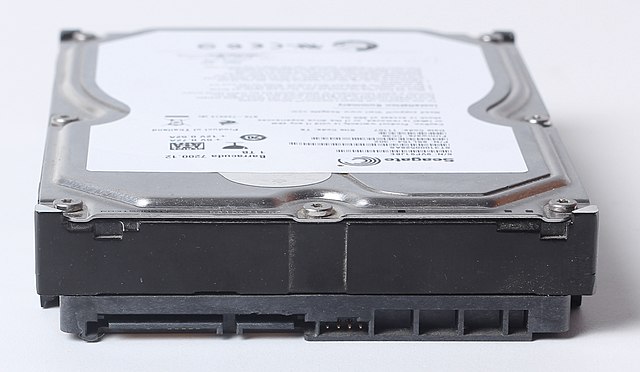Partial-response maximum-likelihood
In computer data storage, partial-response maximum-likelihood (PRML) is a method for recovering the digital data from the weak analog read-back signal picked up by the head of a magnetic disk drive or tape drive. PRML was introduced to recover data more reliably or at a greater areal-density than earlier simpler schemes such as peak-detection. These advances are important because most of the digital data in the world is stored using magnetic storage on hard disk or tape drives.
Continuous-time Partial-Response (class 4) and corresponding 'eye pattern'
Early PRML chronology (created around 1994)
A hard disk drive (HDD), hard disk, hard drive, or fixed disk, is an electro-mechanical data storage device that stores and retrieves digital data using magnetic storage with one or more rigid rapidly rotating platters coated with magnetic material. The platters are paired with magnetic heads, usually arranged on a moving actuator arm, which read and write data to the platter surfaces. Data is accessed in a random-access manner, meaning that individual blocks of data can be stored and retrieved in any order. HDDs are a type of non-volatile storage, retaining stored data when powered off. Modern HDDs are typically in the form of a small rectangular box.
A partially disassembled IBM 350 hard disk drive (RAMAC)
2.5-inch hard disk drive with cover removed
The end of a 3.5 inch hard disk drive with a Serial ATA (SATA) interface
Destroyed hard disk, glass platter visible






